microfourthirds
Latest

Panasonic's first box-style mirrorless camera is meant for videographers
The Micro Four Thirds-based LUMIX BGH1 will be available next month.

Olympus' OM-D E-M5 Mark III camera is small and shoots fast
While other companies are touting full-frame and compact APS-C cameras, Olympus is still squarely in the Micro Four Thirds camp. With launch of its latest mirrorless camera, the company is playing to the strength of that smaller format: speed. The 20-megapixel OM-D E-M5 Mark III can shoot at up to 6 fps with continuous autofocus and the mechanical shutter, 10 fps with the electronic shutter enabled, and 30 fps with no autofocus -- nearly double the speeds of the last model.

Panasonic's G95 is a do-it-all hybrid mirrorless camera
With the release of the Lumix G95 (the G90 in Europe), Panasonic continues to build cameras that appeal equally to photographers and video shooters. The hybrid mirrorless camera packs a 20.3-megapixel Micro Four Thirds sensor with an all-new Venus engine and 5-axis in-body stabilization. It can shoot at 9 fps, or 6 fps with continuous autofocus, and record 30 fps 4K video or 1080p video at up to 120 fps.

Insta360 Titan is an 11K, eight-lens beast of a VR camera
Insta360 already has a line of 8K professional VR cameras, but apparently there's demand for an even higher resolution. After the teaser at last year's CES, this time the company is officially bringing out the Titan, an 11K VR camera consisting of eight lenses. Not only that, but the device also uses Micro Four Thirds sensors -- the largest available on any standalone VR camera -- with 10-bit color support. Priced at $14,999, this device is clearly aimed at folks who take VR cinematography very seriously.
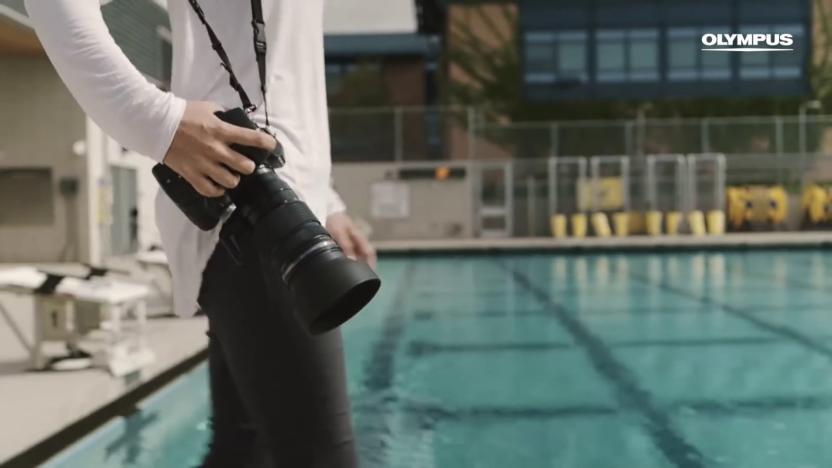
Olympus is launching a high-end sports-oriented camera this month
All the camera excitement of 2018 mostly bypassed Olympus, but the venerated camera maker is looking to start 2019 with a bang. It will unveil what looks to be a very fast, rugged sports-oriented camera -- possibly a successor to the OM-D EM-1 Mark II -- on January 24th, 2019.
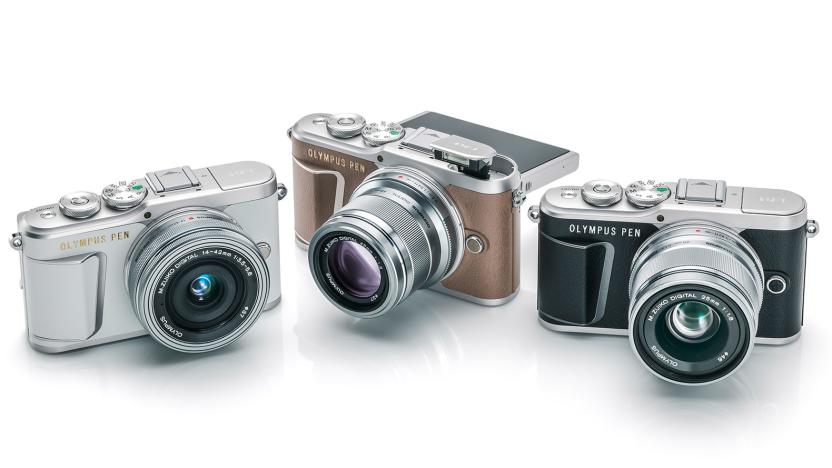
Olympus' chic 4K mirrorless E-PL9 arrives in the US for $600
With 4K and three-axis in-body stabilization, the Olympus E-PL9 is a good example of how mirrorless cameras are winning consumers by offering pro features for not much cash. The retro-styled model aimed at the tourist market has now arrived in the US in three colors (Pearl White, Onyx Black and Honey Brown), and will run you $600 without a lens.

Panasonic's GX9 packs 4K video and more into a tinier body
Panasonic's Lumix GX8 flagship compact was already a pretty innovative camera back in 2015 with 4K video, stabilization and a relatively high resolution 20.3-megapixel sensor. The next generation Lumix GX9 builds on that tech, but lowers the price and fits it into a new body borrowed from the GX85. That's a good thing -- the GX85 is a nice-looking, very compact camera with physical dials, and the GX9 brings its bigger sensor, tiltable electronic viewfinder (EVF) and other nice perks.

Panasonic's Lumix GH5 is even bulkier in person
Panasonic's long-awaited Micro Four Thirds camera, the GH5, is already being shown off at CES 2017. Like its predecessor the GH4, this new flagship is much bulkier than most mirrorless shooters. That's not a bad thing by any means, it was just one of the first things I noticed when I picked it up. If you're familiar with the previous model, you'll feel right at home with the button placement on the GH5. It's on the inside where most changes are, starting with the new 20.3-megapixel Live MOS sensor (no low-pass filter) and Venus Engine image processor.

Panasonic's GH5 flagship camera arrives in March for $2,000
After teasing the Lumix GH5 a few months ago, Panasonic is finally ready to share definitive details about its flagship mirrorless camera. The system, geared toward photographers and videographers alike, features a 20.3-megapixel Live MOS sensor (with no low-pass filter), a new Venus Engine image processor, up to 25,600 ISO and in-body dual 5 axis image stabilization. Naturally, the GH5 is expected to shine in video mode, where it'll offer 10-bit, 60fps shooting at 4K resolution. You'll also get 6K photo burst at 30fps, a 3.2-inch LCD screen, 3.6-million-dot OLED viewfinder, as well as Bluetooth and WiFi for remote connectivity.
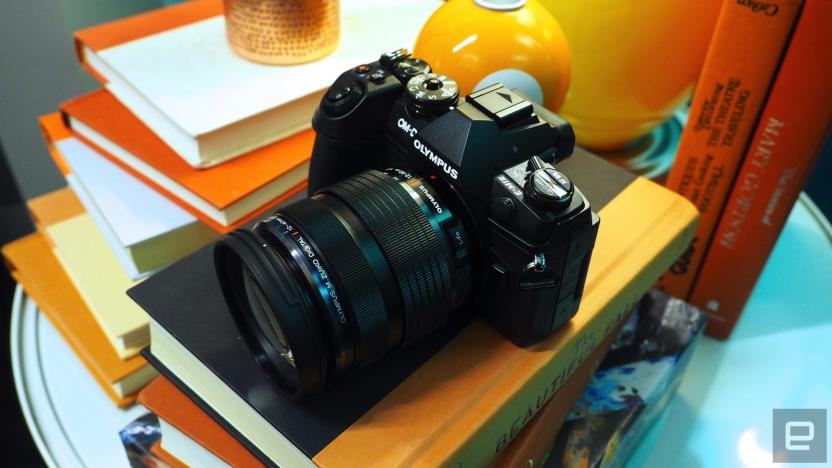
Olympus' OM-D E-M1 Mark II hits nearly all the right notes
I use two cameras on a regular basis: my iPhone 7 Plus and an Olympus OM-D E-M1 Mark I. The latter has been my workhorse since 2014, when many Engadget staffers started using it for field assignments. I've taken it to almost every press event I've attended these past two years, and the results are rarely disappointing. Still, the idea of a faster model with a better autofocus was tempting. That's where the recently launched OM-D E-M1 Mark II comes in.
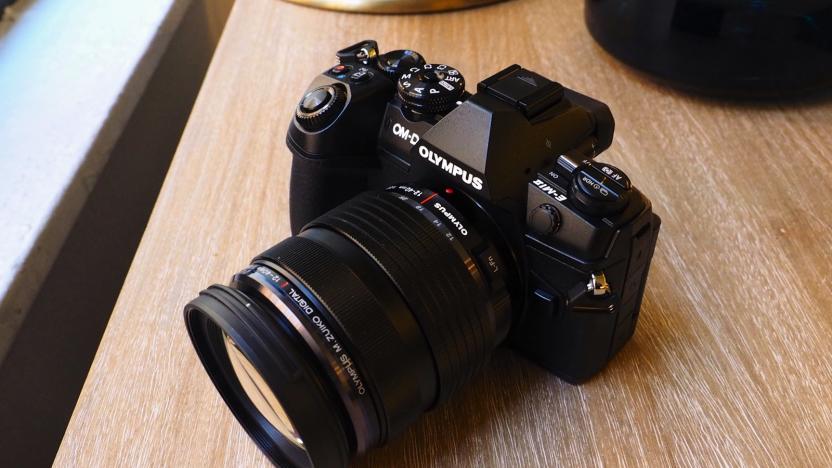
24 hours with the Olympus OM-D E-M1 Mark II
After being announced in September, Olympus' OM-D E-M1 Mark II quickly became one of the most anticipated cameras of the year. And for good reason. The new flagship mirrorless, which will hit stores in December for $2,000 (body only), is loaded with high-end specs. That includes a 20.4-megapixel Live MOS sensor (Micro Four Thirds), a dual quad-core Truepic VIII image processor, 121-point autofocus system and in-camera stabilization. Above all, though, the E-M1 Mark II is about sheer speed, featuring 18-fps shooting with continuous autofocus and autoexposure enabled, or an insane 60 frames per second if those settings are locked.

Olympus' high-end OM-D E-M1 Mark II camera arrives in December
If you've been jonesing for Olympus' ultimate take on a mirrorless camera, the OM-D E-M1 Mark II, you now know when to expect it... although it's going to cost you. The flagship cam will arrive in stores by late December for $2,000 body-only in the US, or £1,850/£2,400 in the UK for respective body-only and 12-40mm f/2.8 kit lens versions. That's a lot to shell out for a 20.4-megapixel Micro Four Thirds shooter, but Olympus is betting that the E-M1 Mark II's tricks are worth the money.

A closer look at Olympus' OMD-EM II flagship mirrorless camera
Is Olympus hampered by its micro four-thirds sensor when mirrorless rivals have APS-C and Fujifilm just launched a medium-format camera? I had a look at the company's new OMD-EM1 Mark II flagship during Photokina, and the company is doing its best to prove it's not. By marrying a brand-new 20.4-megapixel sensor to a dual quad-core TruePic VIII image processor, Olympus has made a blazingly quick camera. Combined with a new 121-point phase detection AF system, It can shoot 18 RAW frames per second in continuous autofocus and exposure mode, and a crazy 60 frames per second with those locked off.

Olympus' PEN E-PL8 is a stylish Micro Four Thirds camera
It wasn't too long ago that Olympus introduced its PEN-F camera, and now the company is following that up with a less expensive retro-looking model. Meet the PEN E-PL8, a Micro Four Thirds shooter with a 16.1-megapixel Live MOS sensor, a new TruePicTM VII sensor, 3-axis image stabilization and an ISO range of 100-25,600. Since it is an entry-level PEN, the E-PL8 doesn't capture videos in 4K, although you can record 1080p at 24 and 30 fps. You also have WiFi connectivity, which will let you transfer images to a smartphone or tablet through Olympus' mobile app. It'll hit stores in October for $550 body-only, or $100 for the kit with a 14-42mm lens. Not bad if you want a stylish, compact camera.

Yi's mirrorless camera offers Leica looks for $330
Yi Technology's fledgling camera strategy goes beyond action cams. It's introducing the M1, a Micro Four Thirds mirrorless camera that promises solid performance (not to mention some familiar looks) for the money. This isn't the most advanced camera between its 20-megapixel sensor, a maximum ISO 25,600 sensitivity, and the absence of either a built-in flash or an electronic viewfinder. However, it also starts at the equivalent of $330/£253 bundled with a 12-40mm f/3.5-5.6 lens ($450/£345 with a 42.5mm f/1.8 lens), and bears more than a passing resemblance to modern Leica cameras -- it's a relatively accessible and stylish entryway into the world of interchangeable-lens photography.

Panasonic targets budget 4K videographers with the Lumix G85
Video shooters were excited about Panasonic's Lumix G7 camera when it launched last year as an $800 alternative to the lovely, but pricey GH4. Just over a year later, the company has launched a successor, the G85. Like the last model, it captures 4K video, has an OLED electronic viewfinder (EVF), a 16-megapixel sensor and a tilt-and-swivel screen. The big change is a new shutter that cuts vibration 90 percent, along with a 5-axis optical image stabilizer that further reduces the odds of blurry photos or shaky video.

Panasonic's mirrorless selfie camera fixes your flaws
To get the best possible pictures -- of yourself -- you could do worse than Panasonic's latest Lumix, the GF8. With a 16-megapixel sensor and flip-around screen, the mirrorless camera will certainly take far better pictures of you (and other stuff) than a smartphone. The drawback of putting an interchangeable-lens camera next to your face is that it also highlights your flaws, so Panasonic has introduced "Beauty Retouch" mode for selfies. In its own words, the feature "enables users –- especially women -- to shoot portraits more attractively with its Soft Skin, Defocusing and Slimming effects."
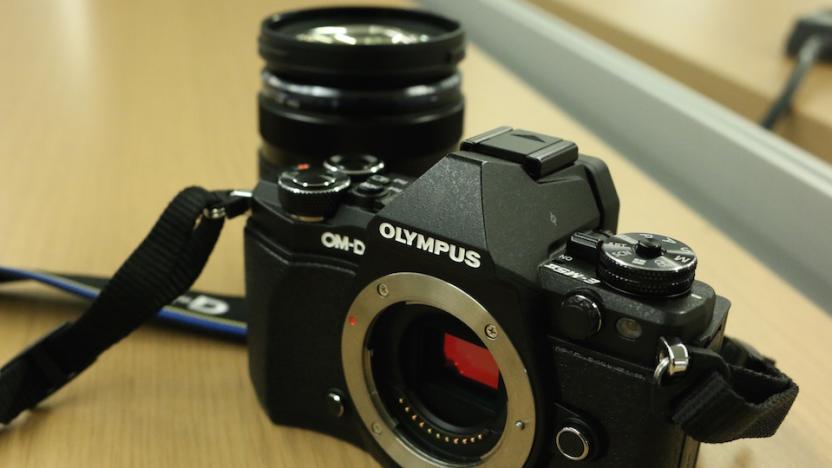
Olympus' OM-D E-M5 Mark II is a solid mid-range mirrorless camera
Camera manufacturers do a great job of not making your purchases feel obsolete after a year. Case in point: Olympus' OM-D E-M5 Micro Four Thirds camera, which the company updated last month, more than three years after the original was introduced. I'm not saying the original is obsolete per se, but there's no doubt the new E-M5 Mark II is a godsend for people invested in the Olympus ecosystem. So what's actually new in this model, you ask? A lot, both inside and out, although it does maintain a similar look and feel to its predecessor.

Panasonic's LX100 makes huge compact leap with 4K video, MFT sensor
If you're thinking about buying Sony's sublime RX100 III compact camera, Panasonic has just made that decision a lot more difficult. The new $899 Lumix DMC-LX100 is leaps and bounds ahead of its LX7 predecessor and the most sophisticated compact the Japanese company has ever built. For starters, Panasonic has trumped the RX100's 1-inch sensor by equipping the new model with a Micro Four Thirds-sized, 12.8-megapixel MOS chip, the same size used on its big-boy interchangeable-lens models. Though it's cropped compared to its mirrorless models to allow for different aspect ratios, the sensor is still 50 percent larger than the LX7's 1-inch model. It's also got a fast Leica 24-75mm (35mm equivalent) f/1.7-2.8 lens, a wide-screen, 2,764K dot LVF (live viewfinder) and 4K video capture. Some of those specs put it on par with the company's flagship GH4, and well ahead of all its other interchangeable MFT models.

Panasonic's GM5 mirrorless is still tiny and now has a live viewfinder
Panasonic has just launched the Lumix DMC-GM5 targeted at shooters who want high performance with a form factor that's about as small as you can make an interchangeable lens, Micro Four Thirds camera. To remind you (Panasonic has a dizzying array of MFT cameras that even confuses us), the GM5 is the successor to the GM1, the company's smallest form-factor ILC model. It's roughly the size of a pack of cards, and weights about 0.62 pounds including a battery and lens. Specs remain similar to the GM1, with a 16-megapixel sensor, 1080p/60fps video, a max ISO of 25,600, a 1/16,000 shutter speed and a new "snap movie mode," that allows photos and video to be taken at the same time. The other new toy is a 1,166K-dot live viewfinder (LVF) with a 100 percent FOV and full color reproduction. Ironically, most of those specs (other than the pixel count) are lower than Panasonic's LX100, a new compact, fixed lens MFT model also introduced today. Daniel Cooper contributed to this report.




